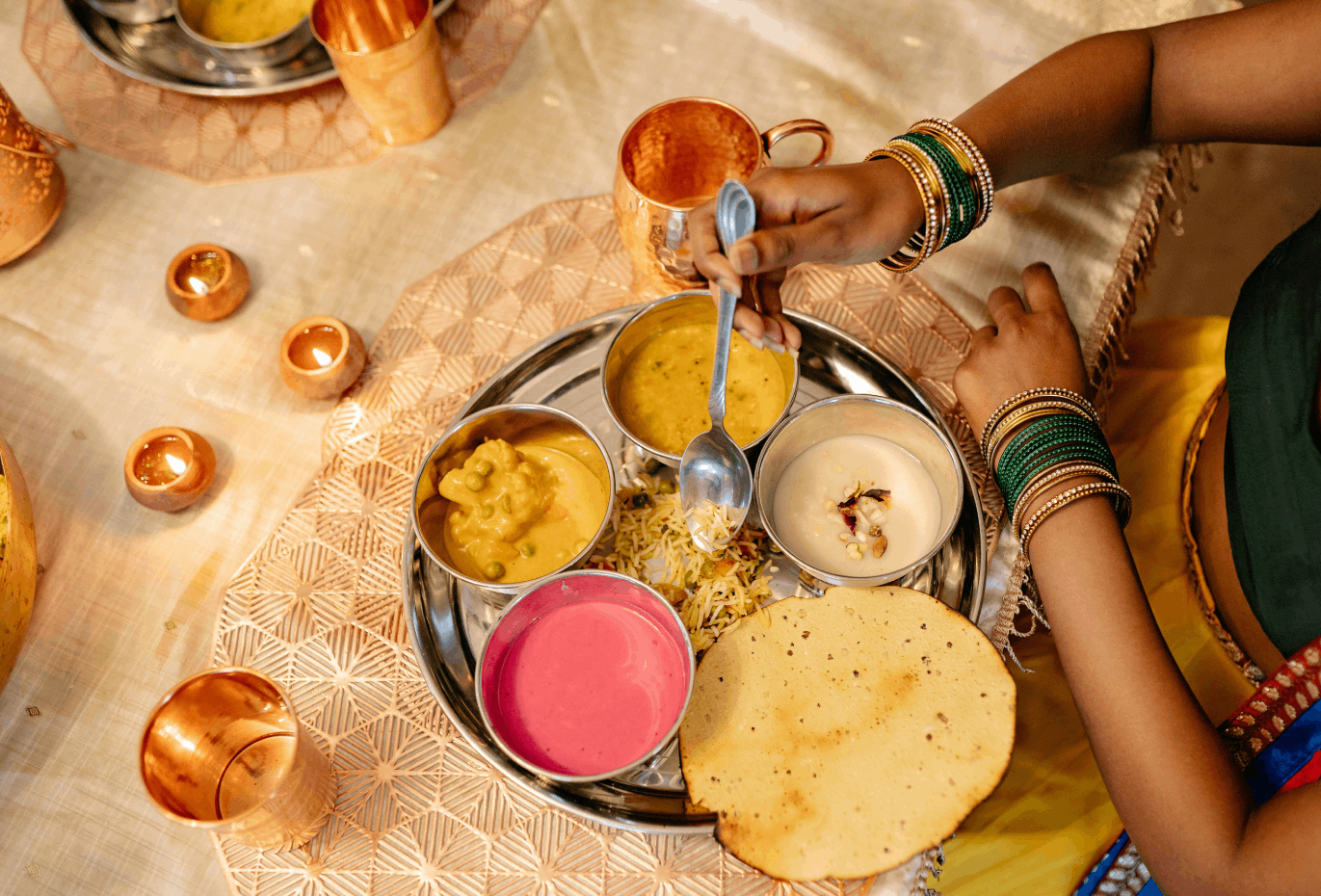Ghee, also known as clarified butter, holds a revered position in traditional cooking and holistic wellness practices. Its history is steeped in the culinary and cultural traditions of India and the Middle East, where it has been cherished for centuries.
Culinary Significance
In traditional Indian and Middle Eastern cuisine, ghee is celebrated for its rich aroma, nutty flavor, and high smoke point, making it ideal for sautéing, frying, and deep-frying. In Indian kitchens, it is a cornerstone ingredient for tempering spices, creating flavorful curries, and crafting indulgent sweets like halwa and laddoos. Middle Eastern recipes use ghee in dishes such as baklava and samosas, adding depth and richness.
Beyond its taste, ghee’s stability at high temperatures makes it a healthier alternative to many cooking oils. Its ability to enhance the bioavailability of fat-soluble nutrients further underscores its culinary significance.
Ayurvedic Importance
In Ayurveda, ghee is considered a sacred and therapeutic substance. It is believed to balance the body’s doshas (vital energies), particularly Vata and Pitta, and is used as a carrier (anupana) to deliver medicinal herbs deep into the tissues. Ghee is also renowned for its digestive benefits, as it aids in nourishing the gut lining and promoting overall digestion.
Ayurvedic texts praise ghee for its rejuvenating properties, suggesting it supports brain health, boosts memory, and promotes longevity. It is also a common base for massage oils and skincare formulations, valued for its ability to moisturize and heal.
Enduring Legacy
The timeless appeal of ghee lies in its versatility and nutritional profile. Whether used in rituals, as a staple in flavorful recipes, or as a health remedy, ghee has transcended generations, solidifying its place as a symbol of tradition and well-being.














